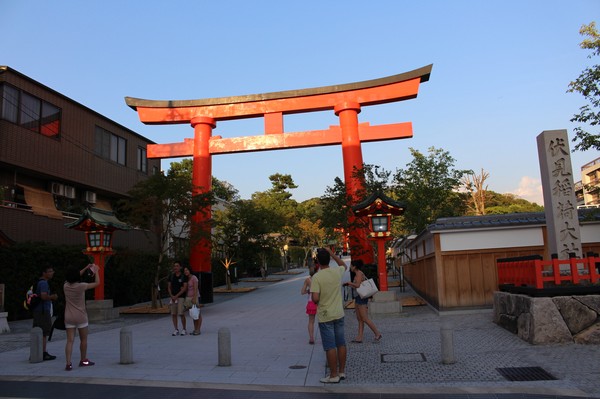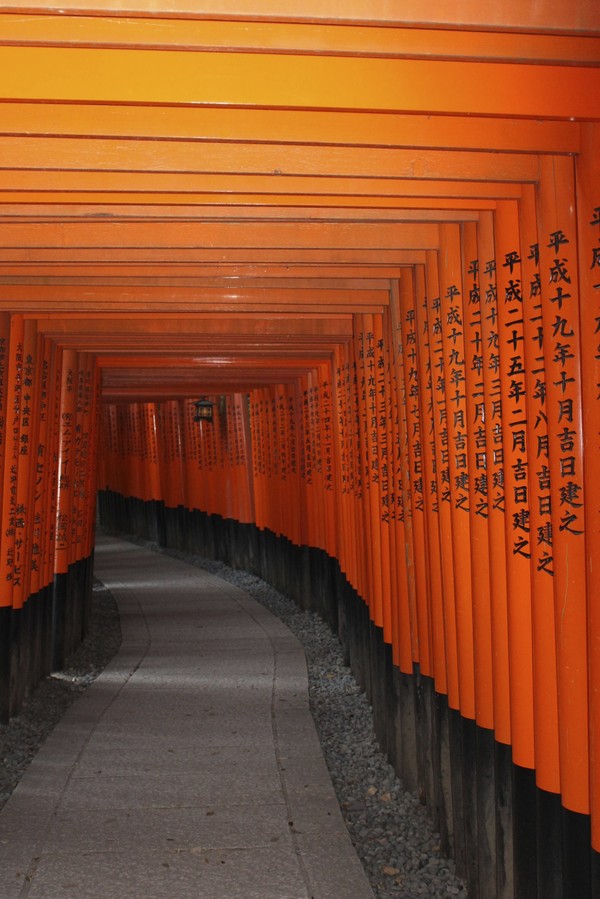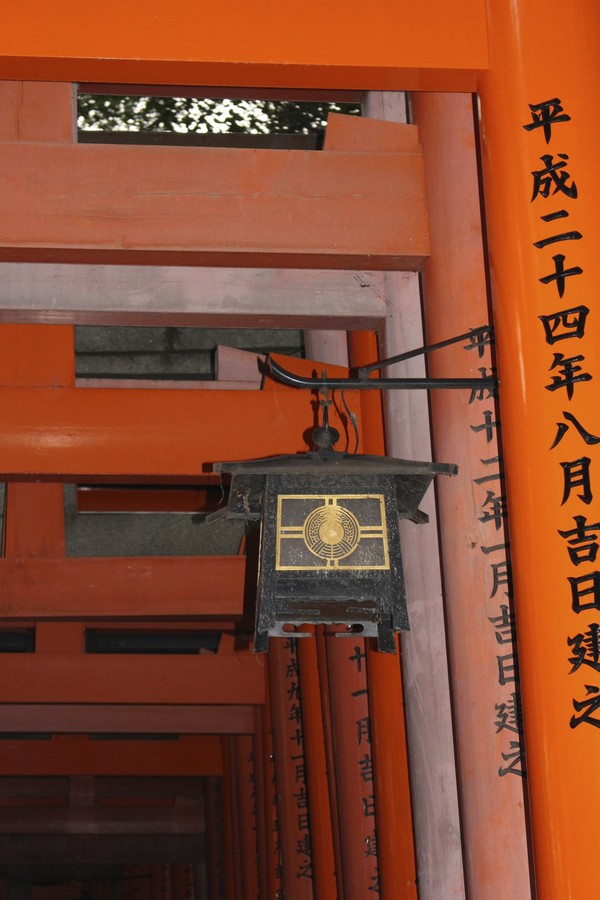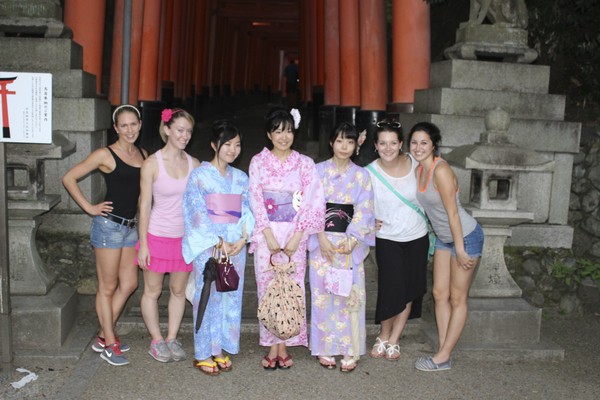Ja jag vet att det är lite sent men ätnligen är jag klar med att fixa korten från vårt sista utflyktsmål i Kyoto som var Fushimi Inari-taisha (även kallat the red gates tror jag). Jag vill alltid läsa och lära mig lite om allt jag ser och inte bara lägga in korten men då tar det mycket längre tid och särskillt när det är lite komplicerat att förstå. Ja kulturen och religionen här är inget jag riktigt kommer i håg att jag läst om i skolan något djupare så tar lite tid att förstå och få det att hänga i hop, + att jag som ni kaske vet vid detta lag är perfektionist och vill att allt ska vara toppen innan jag går vidare. Ja därför tar det lite tid med att lägga upp kort och skriva i bland men sådan är jag=) Hoppas ni står ut... Här kommer lite bilder iaf och lite fakta för den som vill från wikipedia:










Såg dessa japaner där och bad att få ta ett kort med dem=)

Fushimi Inari-taisha is the head shrine of Inari, located in Fushimi-ku, Kyoto, Japan. The shrine sits at the base of a mountain also named Inari which is 233 metres above sea level, and includes trails up the mountain to many smaller shrines. Since early Japan Inari was seen as the patron of business, and merchants and manufacturers have traditionally worshipped Inari. Each of the torii at Fushimi Inari Taisha is donated by a Japanese business. First and foremost, though, Inari is the god of rice. "Tori at the foot of the mountain". The entrance to an Inari shrine is usually marked by one or more torii and some statues of kitsune,( is the Japanese word for fox) which are often adorned with red yodarekake (votive bibs) by worshippers out of respect. This red color has come to be identified with Inari, because of the prevalence of its use among Inari shrines and their torii. The main shrine is the Fushimi Inari Shrine in Fushimi, Kyoto, Japan, where the paths up the shrine hill are marked in this fashion.The kitsune statues are at times taken for a form of Inari, and they typically come in pairs, representing a male and a female. These fox statues hold a symbolic item in their mouths or beneath a front paw—most often a jewel and a key, but a sheaf of rice, a scroll, or a fox cub are all common. Almost all Inari shrines, no matter how small, will feature at least a pair of these statues, usually flanking or on the altar or in front of the main sanctuary. The statues are rarely realistic; they are typically stylized, portraying a seated animal with its tail in the air looking forward. Despite these common characteristics, the statues are highly individual in nature; no two are quite the same. Offerings of rice, sake, and other food are given at the shrine to appease and please these kitsune messengers, who are then expected to plead with Inari on the worshipper's behalf.
Hämtat från:
http://en.wikipedia.org/wiki/Fushimi_Inari-taisha